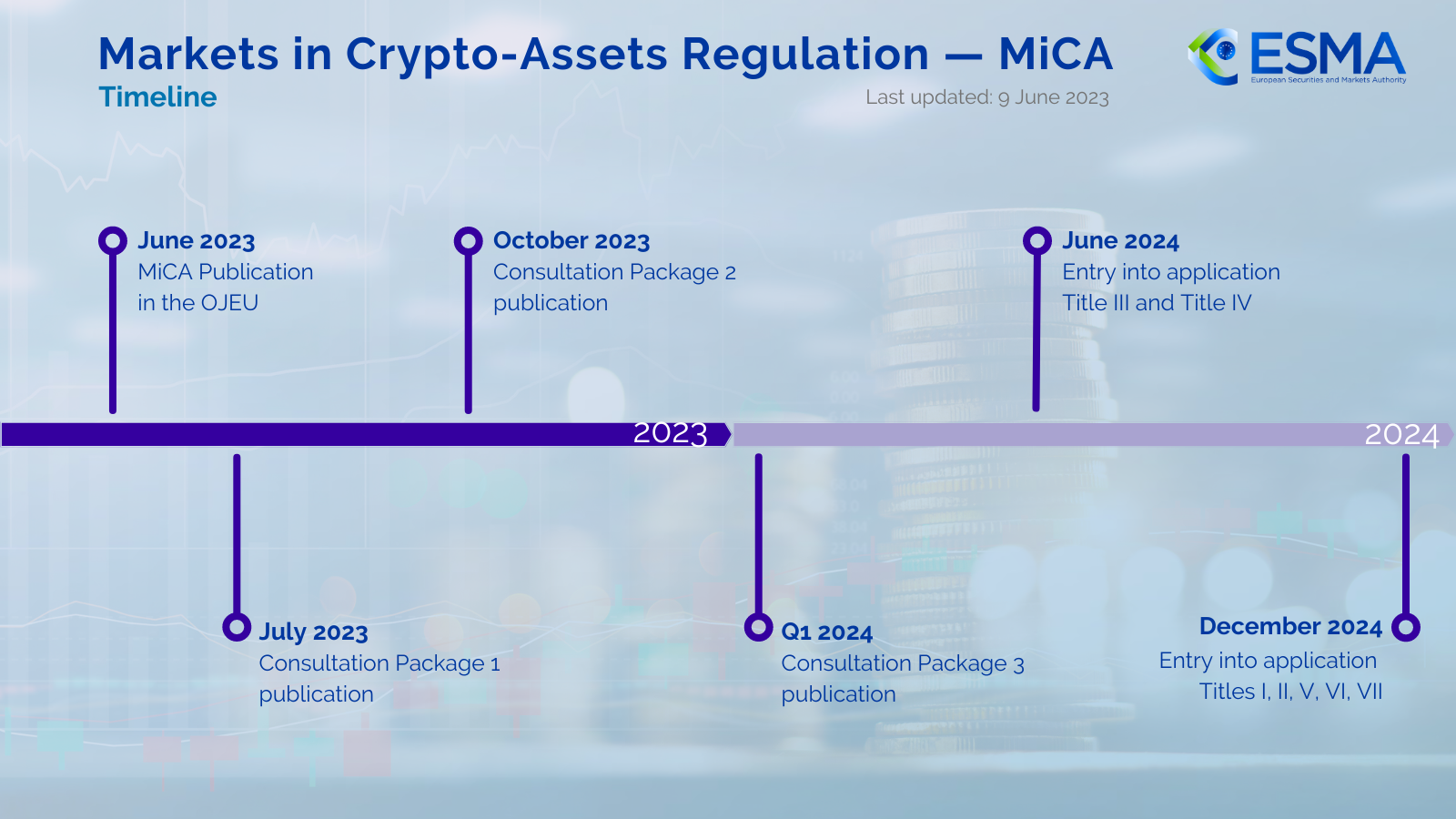Table of Contents
The European Securities and Markets Authority (ESMA) has released its final package of regulatory technical standards (RTS) and guidelines, completing the regulatory framework needed for the Markets in Crypto-Assets Regulation (MiCA). This marks a significant milestone as MiCA’s full implementation date of December 30, 2024, approaches.

Over the last 18 months, ESMA, in collaboration with the European Banking Authority (EBA), has developed more than 30 sets of technical standards and guidelines to ensure the smooth application of MiCA across the European Union. These documents address key issues such as market abuse prevention, investor protection, and operational resilience, further defining the responsibilities of crypto-asset service providers (CASPs).
In a announcement on Tuesday, ESMA chair Verena Ross described the framework as “a significant step towards having a regulatory framework for the crypto market in place.” She also highlighted that while the guidelines reduce uncertainty, they cannot eliminate the inherent risks associated with crypto-assets, urging investors to remain vigilant.
Key Components of the Final Guidelines
The newly published package includes several critical elements that encompass market abuse prevention, reverse solicitation, suitability standards, crypto asset transfers, and operational resilience.
These guidelines also delineate the boundary between MiCA and other regulatory frameworks, such as MiFID II, by specifying conditions under which crypto-assets may qualify as financial instruments.
Industry Implications
Entities operating within the EU’s crypto market must comply with MiCA's rules governing transparency, disclosure, and governance. This includes stricter anti-money laundering protocols and requirements for stablecoin issuers to hold sufficient reserves to safeguard consumers.
This comprehensive framework has already drawn international attention as a potential blueprint for crypto regulation in other jurisdictions.
While MiCA primarily covers centralized crypto services, ESMA is closely monitoring decentralized finance (DeFi) and non-fungible tokens (NFTs) for potential future inclusion. Meanwhile, the EBA is ramping up its regulatory capacity to oversee stablecoins and cybersecurity requirements under MiCA and the Digital Operational Resilience Act (DORA).
The guidelines will be translated into all official EU languages and take effect three months after their publication on ESMA’s website. The draft RTS have been submitted to the European Commission for adoption, finalizing the procedural groundwork for MiCA.
As regulators and CASPs prepare for the full transition, ESMA has committed to providing continued guidance and ensuring supervisory consistency across the bloc.







